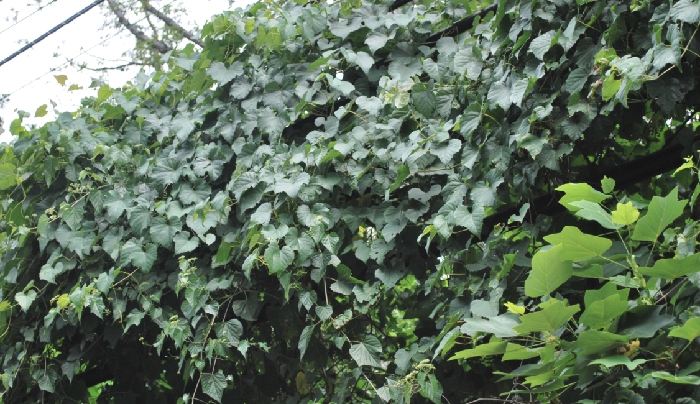Crews Working on Grassy Roadsides and Medians
(July 20, 2016) – Anyone with a garden knows that invasive plant species grow rapidly and often jeopardize a gardener’s hard work. To reduce the impact on roadside pants and trees, the Maryland Department of Transportation’s State Highway Administration (SHA) is underway with a $2 million project to eradicate invasive vines such as Porcelain Berry and Kudzu, as well as other invasive and noxious plants. Weather permitting, the project will be complete fall 2018.
There will be minimal impacts to motorists as the work will take place on grassy shoulders, medians and roadsides. Crews with SHA’s contractor, Ed’s Plant World of Brandywine, will spend approximately 18 months removing targeted invasive vegetation and 18 months monitoring and treating re-sprouts. Follow-up work includes crews planting native trees and ground-cover plants.
“Invasive species pose a threat to Maryland meadows, pollinators, as well as drivers, said SHA’s Director of Environmental Design Sonal Sanghavi. “The woody and vine species often grow rapidly and can quickly kill a native tree, which poses a falling hazard for those trees located near the road.”
These species can grow so fast that they pose a sight distance hazard for motorists.
(SHA photo:
Kutzu, or Japanese arrowroot, on an I-495 roadside. Kutzu grows rapidly and kills native vegetation by blocking sunlight.)
Although SHA is targeting all invasive species in the corridor such as Canada thistle, which is required by federal law to control, SHA is also targeting mile-a-minute weed, porcelain berry and kudzu, to name a few. These plants are highly invasive and threaten native Maryland species, which attract valuable pollinators. By removing the vines, SHA is protecting the existing mature plant material which in turn keeps large, dead trees from falling on the roadway.
Porcelain berry is a huge problem in urbanized regions. Because of its attractive purple berries, it was originally grown as an ornamental vine. Kudzu was originally brought into the U.S. for use as a cover crop to control erosion in the cotton fields and has literally taken over the south. It is just starting to get a foothold in the mid-Atlantic region but is getting more prevalent every year. Most woody trees and vines will be controlled by mechanical means - chainsaws, clippers and chippers, which is highly effective and minimizes the volume of herbicide use. Where this treatment method is not possible, foliar application is necessary and in these cases, citizens may notice large swaths of dying invasive vegetation, which is normal in the initial vegetation control phase of the project. Herbicides used on the project are selected based on their effectiveness and are applied in accordance with manufacturer’s recommendations and under the supervision of a certified pesticide applicator.

(SHA photo:
Porcelain berry taking over a large area along I-495.)
Porcelain berry is a vigorous invader of open and wooded habitats. The vine’s shades out native Maryland shrubs, trees and other native pollinator-attracting plant species. As it spreads, it climbs over and blankets existing plants and weakens and kills them by blocking sunlight.
Once vegetation management is complete, native trees and groundcovers will be installed as appropriate. Some of the native vegetation is being selected to increase
pollinator habitat. Milkweed is one example. This species is attractive to pollinators, but is slowly disappearing from Maryland roadsides.
###